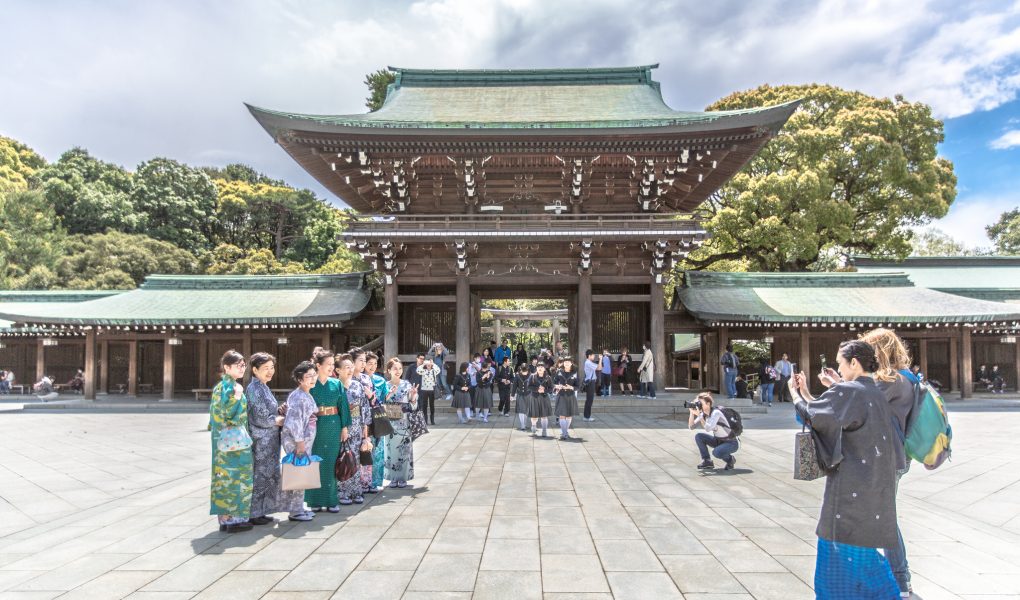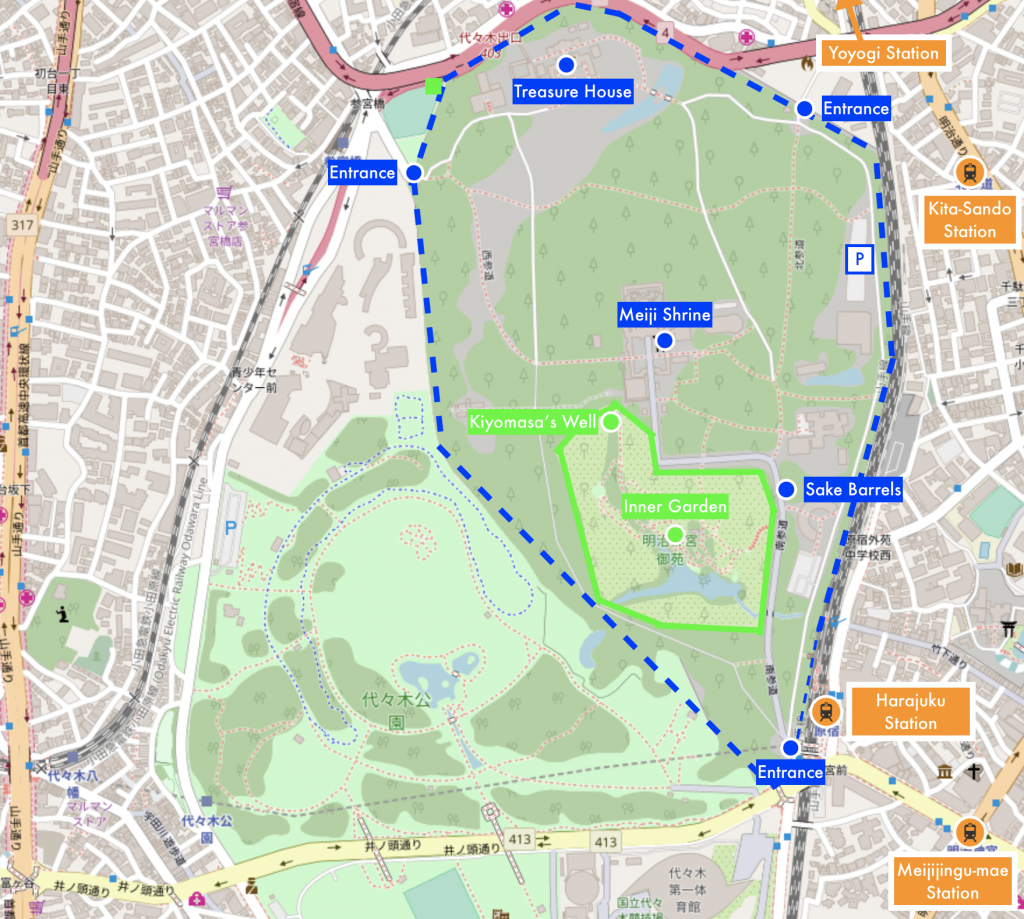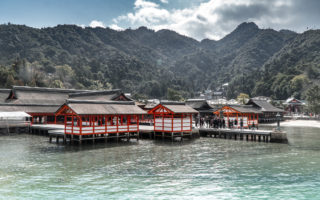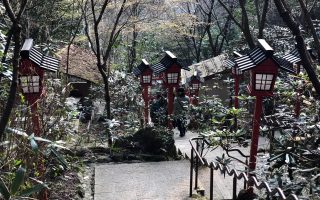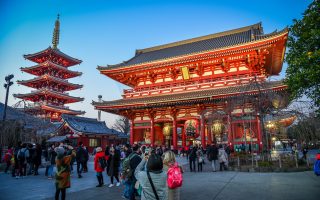Meiji Shrine (Meiji Jingū) is a shinto shrine located in Shibuya, Tokyo. The shrine is dedicated to the spirit of Emperor Meiji and his wife Shōken. It is built in the traditional Nagare-zukuri style which is common for shinto shrines. The style can be identified by the large, curving roofs which extend over the entrance and creates a portico – a sort of pre-entrance porch. Note the imperial seal (chrysanthemum flower) on the torii gates around the shrine area when you approach.
History of Meiji Shrine
Being dedicated to Emperor Meiji who died in 1912, Meiji shrine is relatively new compared to other shrines in and around Tokyo. After the emperors passing in 1912 it was decided to honor him and his contribution to Japans modernization by constructing a shrine dedicated to him and his wife. The shrine was built on the site of the emperors favorite iris garden, and was finished in 1921.
Like many other shrines in Tokyo, Meiji Shrine was destroyed during the second world war. It wasn’t until 1958 that the buildings and park were reconstructed with money collected by the public.
Today the shrine is considered one of the most attractive in Tokyo for marriages and other official business. It becomes especially lively in the days following new years even when the Japanese make their first shrine visit of the year (Hatsumōde).
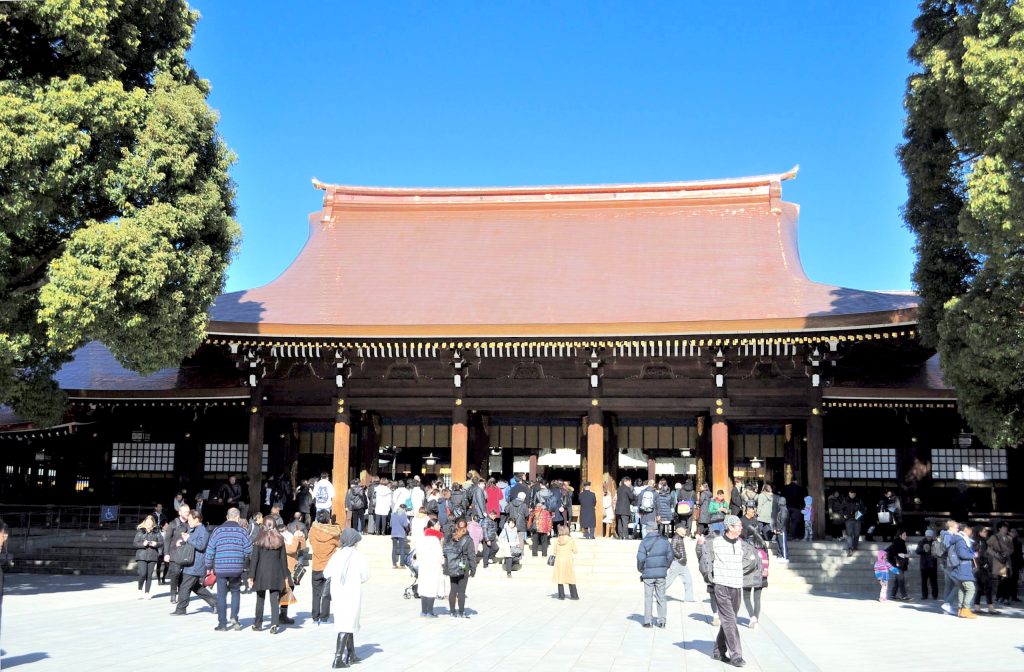
Park and surrounding area
What Meiji shrine lacks in history, it compensates for with it’s beautiful setting. The shrine is located in a large evergreen forrest made up of some 120,000 trees of almost 400 different types. When the park around the shrine was constructed, each of the country’s 47 prefectures donated a tree from their area – a beautiful gesture from the entire country to the passed emperor. The area appears and practically functions as a park for the citizens of Tokyo. It is a convenient place to escape the bustling city of Tokyo. Even though it is located in one of the busiest areas of the city, between Shinjuku and Shibuya, there are plenty of places inside the park from where you can’t even see the city.
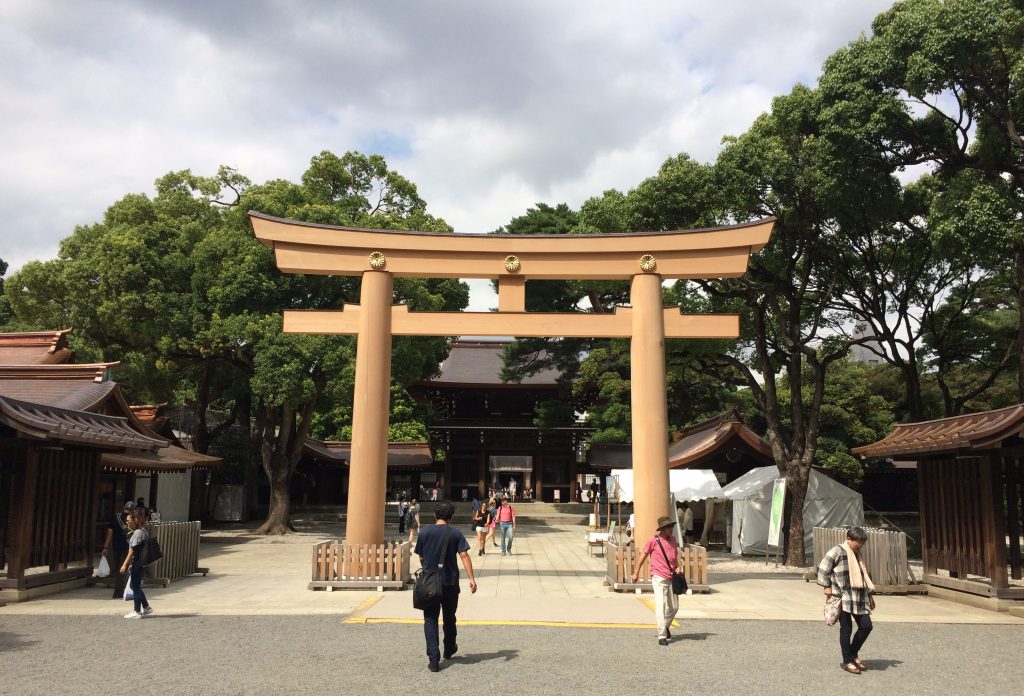
Treasure House (Homotsuden)
The treasure house (homotsuden) is located north of the shrine complex. It is a museum containing treasures and personal belongings of emperor Meiji and empress Shōken. The museum, which was constructed shortly after the shrine it self, is designated an important cultural property of the Taishō period (1912-1926).
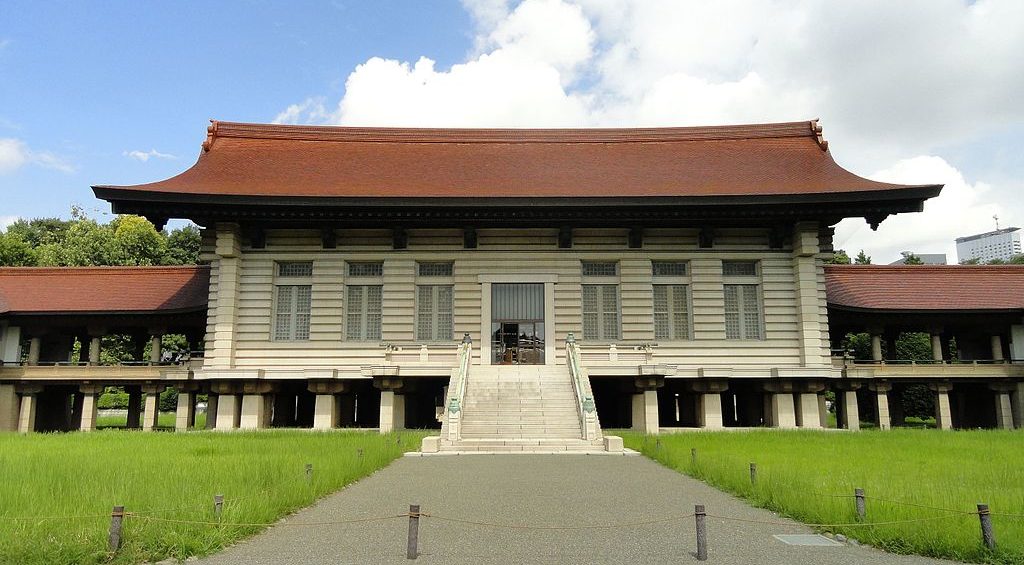
Inner Garden
South of the shrine buildings is the inner garden. The inner garden is a separate garden, which requires the visitor to purchase a ¥500 entry ticket. It is in this garden you can find the iris garden that the emperor loved so much. Naturally this spot becomes very crowded in early summer when the iris are in bloom.
Should you see a long line of people waiting in front of an old well, then you’ve found Kiyomasa’s Well. This well was dug 400 years ago, and was frequented by emperor Meiji. Kiyomasa’s Well has gained a status as a “power spot” – a place of positive energy and luck. A reputation which has increased after a TV show reported how people used photos of the well on their smart phones to increase their luck every time they opened the phone. If you are looking for a bit of extra luck yourself, then you must prepare to wait in line. The wait can be upwards of 30-45 minutes, and the garden management has seen it necessary to implement a “numbered ticket” system and a security guard to handle the masses. Truly impressive.
Sake Barrels
When approaching the shrine from the southern entrance (from Harajuku Station), you will pass a huge wall of beautifully painted sake barrels. Sake is Japanese rice wine and is a very common alcoholic beverage which can have many flavors and can be enjoyed at any Izakaya (bar) in the country. The connection between sake and shinto shrines lies in the belief that people get closer to the gods when they drink sake. The (full) barrels of sake are typically donated to the shrines by sake brewers from all over Japan. The sake is consumed at the shrine on special occasion like performance of rituals, ceremonies, festivals etc. The barrels on display are empty, and are called “Sakedaru” meaning, well yeah.. You guessed it – “Sake Barrel”. Make sure to stop and take some beautiful photos.
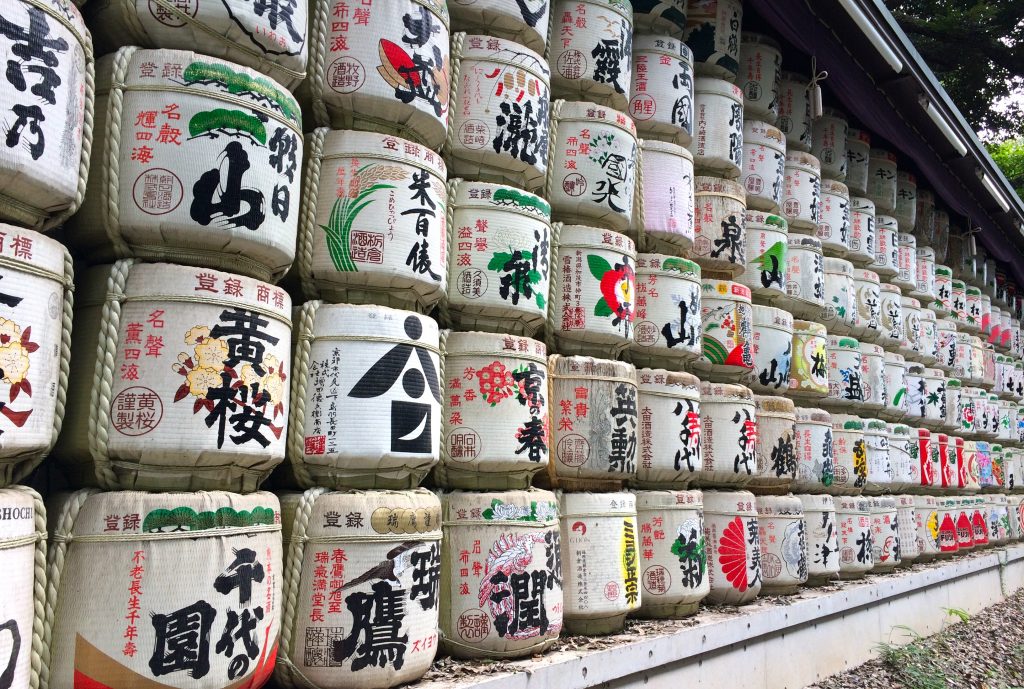
Getting there
By train: Meiji Shrine is surrounded by train stations. Most convenient are Harajuku Station, Meijijingu-Mae Station, Yoyogi Station and Kita-Sando Metro Station.
Get to Harajuku Station by taking the JR Yamanote Line. This line is covered by the Japan Rail Pass. When leaving Harajuku Station you are basically right in front of the Shrines southern entrance.
Get to Meijijingu-Mae Station by taking the Tokyo Metro Chiyoda Line or Tokyo Metro Fukutoshin Line. Take exit 1 or 2 to get out right by the shrines southern entrance.
Get to Yoyogi Station by taking the JR Yamanote Line, JR Chuo Line, JR Chuo-Sobu (local) Line or the Toei Oedo Subway Line. Take exist A1 or A2 to get out the closest to the shrine. From those exists it’s a 5 minute (500m) walk to the shrines northern entrance.
Get to Kita-Sando Station by taking the Tokyo Metro Fukutoshin Line. Take exit 1, and walk 5 minutes (500m) to the shrines northern entrance.

